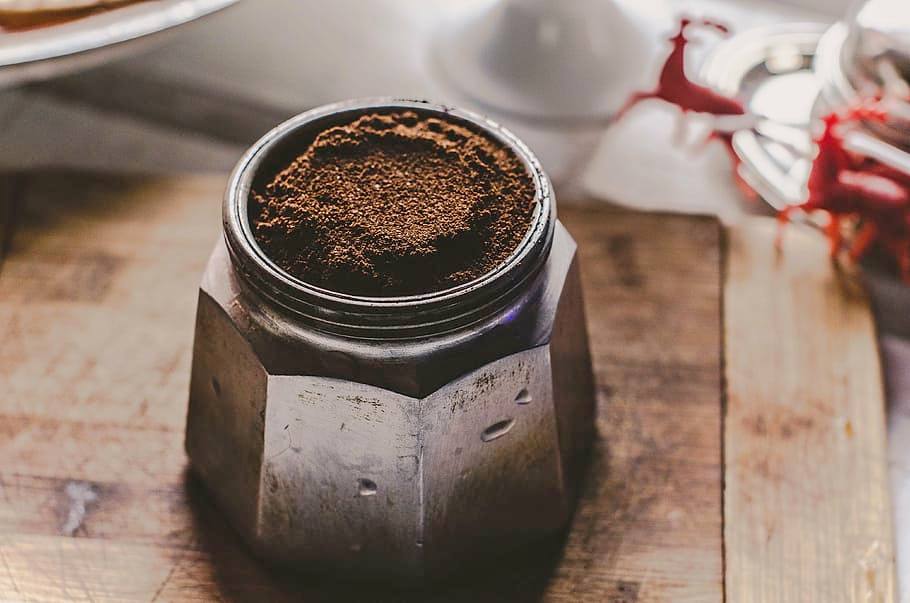Why not throw it away?
Coffee grounds are the thick layer of dregs that are leftover after enjoying a cup of coffee. Most people just throw these away, not thinking too much about its “secret” potential.
In this review, we will take a look at the effects of applying coffee grounds for plants in your garden. More and more people believe that they are an excellent substitution for pesticides and other compounds usually used to support the growth and overall wellbeing of your plants.
How to Apply Used Coffee Grounds as a Fertilizer
Used coffee grounds are rich in nitrogen. Their NPK (Nitrogen – Phosphorus – Potassium) ratio is 2,1: 0,3: 0,3.
For the sake of comparison, certain high-N fish fertilizers that you can buy in the stores have NPK value of 5:1:1. This means that the coffee grounds are not only free but have a chemical composition that makes them a very effective homemade product.
Since the coffee grounds are rich in nitrogen, bear in mind that they will be most suitable for plants that prefer slightly acidic or acidic soils:
- Azaleas
- Rhododendrons
- Camellias
- Blueberries
- Rose bushes
- Tomatoes
- Corn (yes, even corn prefers slightly acidic soil pH)
Maybe the result won’t be visible immediately, but you will definitely do your plant a favor.
When adding the coffee grounds to the soil, be sure to apply it on the surface around the plant, not into the ground. If you put it in the ground, the microbes will take the nitrogen away, leaving the root of the plant hungry.
Also, don’t put too much of the coffee grounds, since thick layers of coffee can suffocate the soil. Its sludgy texture can clog up the soil’s macropores before it breaks down into hummus completely.
Take one or two handfuls of coffee grounds and sprinkle around the plant. Water them a bit, and when you are sure that the coffee grounds are well mixed with the top level of the soil, that’s it! You’ve just injected your plant with a good portion of nitrogen.
Coffee Grounds as a Useful Addition in Composting
They are excellent for composting thanks to the high levels of nitrogen, but also some crucial minerals:
- Calcium
- Potassium
- Iron
- Phosphorus
- Magnesium
- Chromium
As you probably already know, composting is a chemical process in which the organic household remains of plants are intentionally left to decay and decompose and then get used as a fertilizer for the soil.
One of the basic recipes for homemade coffee compost is to mix 33% of coffee grounds with 33% of grass clips and 33% of leaves.
Grass and leaves are necessary because, compared to the structure of coffee grounds, they are rich in carbon, which works hand in hand with nitrogen as a crucial element for providing a balanced “diet” for your soil microbiome. A healthy microbiome will enable faster decomposition of organic matter and provide your plants with basic nutrients.
Other Benefits of Coffee Grounds as Fertilizer
- Besides supplementing the soil with nitrogen, coffee grounds have a really strong scent. Well, it might be pleasant for some of us humans, but it’s repulsive to other critters like snails, ants and even dogs and cats.
- They also attract earthworms, whose presence helps create a healthier soil structure.
- Since the compounds and nitrogen forms in coffee turn the soil more acidic, it can affect a plant’s flower and specifically its color. Coffee grounds can transform the color of hydrangea flowers into a darker shade of blue.
- Some of the other means of usage may surprise you, but people also use coffee grounds to remove fleas from their pets, for odor elimination, as a natural cleaning scrub, and even cellulite reduction.
Where to Find More of the Stuff?
One of the questions you might ask yourself is how you can actually get a large amount of coffee grounds? Even a small garden is huge when you consider how little coffee we actually consume.
Our tip is to try asking at the local coffee shop, since they accumulate large amounts of coffee grounds from the coffee machines during working hours, and usually don’t know what to do with it. With just a few coffee shops you’ll have ample amounts of coffee grounds for plants in your own and maybe your neighbor’s garden as well.
